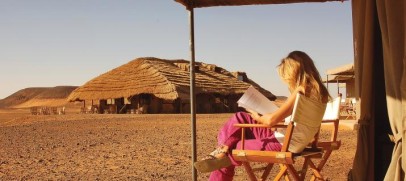Ancient Nubia Explorer

1-Join tour in Khartoum
Our tour begins in Khartoum, Sudan’s vibrant capital city which comprises of both a permanent and nomadic population. Khartoum is located at the confluence of White and Blue Nile and the point where the two rivers converge is called Al- Mogran. It is said that the 2 different colours of the river branches can be seen before they meet to feed the iconic Nile river.
Overnight: Standard Hotel
Single Room option available
2-In Khartoum
After an early morning arrival there is the opportunity for those travelling on the group flight to freshen up. We then begin our exploration of the city with a visit the tomb and small museum of the Mahdi, the Islamic leader of the Sudan who fought in 1885 against General Gordon and English colonisation. After lunch, in a typical local restaurant that overlooks the Nile, we make the short drive to Omdurman. Once the old capital city of Sudan, Omdurman is famed for its huge colourful souk.
Overnight: Standard Hotel
Single Room option available
3-Leave Khartoum and drive to Meroe via Naga
Leaving behind the city of Khartoum we head north through a desert of strange rocky hills to the ancient site of Naga. Here we see the temple of Apedemak (1st century AD), a beautiful sandstone building with walls engraved with the images of the Meroitic kings and gods. Nearby is another temple, in Greek/roman style, called ‘Kiosk’, and another with the remains of statues of rams which was recently discovered in the sands by a German archaeological mission. After a short drive from Naga we reach Musawwarat El
Sufra, where we’ll visit the Elephant Temple – much bigger but less well preserved than those at Naga – and the Lion Temple before continuing to Meroe. On arrival we are greeted with the view of more than 40 pyramids, located on top of a hill, some of them perfectly preserved, that belong to the Royal Necropolis of Meroe. Accommodation is at a permanent tented camp, where the furnsihed tents, with en-suite bathrooms, have views onto the pyramids.
Overnight: Standard Tented Camp
4-Explore the royal necropolis and the royal city of Meroe
The Royal necropolis of Meroe is located at about 3 km from the Nile on some hills covered by yellow sand dunes. Several pyramids stand out with their sharp shapes against the clear sky. Nubian pyramids have no mortuary room inside, the real tomb is dug inside the rock below and is connected with the outside with an inclined tunnel with a small temple at its entrance. The walls are fully decorated with bas-reliefs that show the King’s life and the gods. There’s the opportunity here to take a camel ride (optional). In the
afternoon we move along the Nile to visit the ruins of the royal city. The excavations confirm that the town of Meroe used to cover a large area and the royal city was located in a central position, surrounded by suburbs and a boundary wall. Most of the area where the city is located, formed by many small hills covered by red clay fragments, has still to be excavated by the archaeologists.
Overnight: Standard Tented Camp
5-Crossing the Bayuda desert to Karima
We proceed north to the small town of Atbara. After crossing the Nile, we enter the Bayuda desert, an area bounded by the loop formed by the Nile between the 4th and 6th Cataracts and characterised by sharp black basalt mountains, most of them volcanic and typically cone-shaped. These dramatic mountains alternate with flat stony terrain in a landscape giving rise to large valleys with dry wadis and little vegetation. Dorcas gazelle can be sometimes seen on this journey. We may also come across the camel and donkey caravans of the Bisharin nomads. These isolated desert people live in family groups in small huts made of intertwined branches covered with large blankets made from camel wool, close to the rare water wells in areas where surviving seems almost impossible. We complete our crossing of the Bayuda Desert and in the town of Merowe, we cross the Nile again. Then we reach the small town of Karima at the foot of the Jebel Barkal.
Overnight: Standard Guesthouse
6-Exploring Karima
The small town of Karima lies at the foot of the Jebel Barkal. This landmark in the Nubian desert, Jebel Barkal (Jebel means mountain in Arabic) can be seen from many kilometres away whilst still in the open desert. We spend this moning exploring the area. At the foot of this wonderful isolated red sandstone mountain, considered holy since the ancient times, there is a large temple dedicated to the Pharaohs of the New Reign and to their patron, Amon. Amon’s ancient Pure Mountain, the Olympus of the Nubians, was the religious Nubian heart for more than 1000 years. Beside the ruins of the big temple there are still several sculptured granite rams that were said to border a long avenue that probably led to the pier on the Nile. In the mountain wall there is a large room decorated with basreliefs. The Royal necropolis of the ancient city of Napata, the Nubian capital (from 800 to 400 BC) before the Meroitic period, had a large number of pyramids, located in three different places: few hundred metres north of Jebel Barkal; a dozen kilometres southwards from the holy mountain, in El Kurru and in Nuri, which is located on the other bank of the Nile. Heading southwards to the village
of El Kurru where there is one of the necropolis of the ancient capital, Napata. Here we can visit two tombs, which are excavated in the rock under pyramids – partially collapsed – and are totally decorated with images of the Pharaoh, of the gods and multicolour hieroglyphic inscriptions. Before returning to Karima we then continue through the Nubian desert and visit a petrified forest with thousands of fossilised trunks. This desert is completely different from others – sand dunes, flat sandy plains and red rocky boulders eroded by the wind – provide a real moon landscape.
Overnight: Standard Guesthouse
7-Nile cruise and pyramids
After breakfast, we visit the market in Karima, where we get a real insight into the everyday life of the Sudanese people before heading through the Nubian Desert with its level evenness, its sand stretches and its soft undulation. It is an almost sterile area where no vegetation survives. Until 2008 this drive would take you to the beautiful granite rocky formations of the 4th Cataract where the Nile ran turbulently among rocks forming rapids and a beautiful wild landscape, making navigation of the river very difficult. However in April 2008 the new Dam of Merowee was completed and following flooding and artificial lake was created. We take a cruise on the Nile taking the opportunity to walk on the small islands to explore the sandy beaches along the river edges. In the afternoon we cross the Nile to and spend time at the Pyramids of Nuri.
Overnight: Standard Guesthouse
8-Into Nubia
Following the route of the Nile towards Egypt we head into the central part of the Nubian region. Here the population speaks a different language from the Arabs and the Islamic religion is not as ‘strict’ as in other regions of northern Sudan. The women don’t cover their faces and readily speak to foreigners. The villages are beautiful, sandwiched between sand dunes and palm trees, the houses are painted and decorated with intricate patterns and flowers. Enthusiastic hospitality abounds – the local Nubian people will often invite visitors into their homes to share a meal or a cup of spiced tea. We eventually reach the granite boulders of the Third Cataract which used to be the third huge obstacle that the ancients Egyptians had to face when trying to sail on the Nile River. In Sebu, right on the river bank of the Nile it is possible to visit one of the richest sites of rock engraving of all Sudan with hundreds of images from prehistoric to Egyptian times. Not far from here, among the rocks near the village of Tombos, there are the granite quarries and the remains of a huge statue of the King Taharqa, simply left there in the desert 3000 years ago.
Overnight: Basic Camping
9-Traditional Nubian hospitality
It’s only a short drive today as we continue our exploration of this fabulous region. At the Temple of Soleb we spend time at what is considered to be one of, if not the most beautiful Egyptian temple of all Sudan. Standing as a testimony of the New Kingdom in Nubia, its many walls are rich in hieroglyphic inscriptions and bas-relief figures. In the nearby village we totally immerse ourselves in village life with a stay in a traditional house. This is a large Nubian house where one of the buildings has been allocated for the weary traveller. For those who prefer sleeping under the stars you are welcome to put up your tent in the courtyard.
Overnight: Simple Village House
10-Along the Nile to Old Dongola
After saying a fond farewell to our Nubian hosts we follow the river Nile south, passing picturesque villages on the way. Arriving in Old Dongola we visit two Coptic Christian temples decorated with marble columns.
Overnight: Basic Camping
11-Return to Khartoum
An early start sees us return to Khartoum. Having experienced some of fabulous sites in-situ, this afternoon we visit Archaeological Museum where besides many beautiful objects and artifacts there are two beautiful temples which were rescued by UNESCO and moved from the Lake Nasser area when it was flooded with the construction of the Aswan dam.
Overnight: Standard Hotel
Single Room option available
12-Tour ends
Our tour ends today in Khartoum after breakfast.
Tour includes:
11 Breakfast
10 Lunch
8 Dinner
Transport:
Boat, 4WD
Accommodation:
3 nights Standard Hotel
2 nights Standard Tented Camp
3 nights Standard Guesthouse
2 nights Basic Camping
1 night Simple Village House
Tour Staff:
Driver(s), Explore Tour Leader, Cook
Group Size:
Generally 10 – 16
![]() Explore have been running small group adventure holidays throughout the world since 1981 and have a vast array of experience, knowledge and well established close personal contacts in all the countries in which they operate, which makes them stand out as one of the most trusted adventure tour operators in the UK.
Explore have been running small group adventure holidays throughout the world since 1981 and have a vast array of experience, knowledge and well established close personal contacts in all the countries in which they operate, which makes them stand out as one of the most trusted adventure tour operators in the UK.
They are passionate about what they do, and above all, simply love nothing more than to travel. The founder directors ran overland trips through Asia, Africa and the Americas in the 1960s and 70s prior to setting up the company, and were determined that the spirit of adventure that was such an important part of those early pioneering days, should continue to play key role as part of the driving ethos of Explore.
Our Opinion
It is little wonder that over 60% of all Explore customers who travel each year have travelled with them previously, Explore are clearly committed to the “travel experience” and their itineraries are always offer that slight “Explore Twist” which makes them even more appealing.

